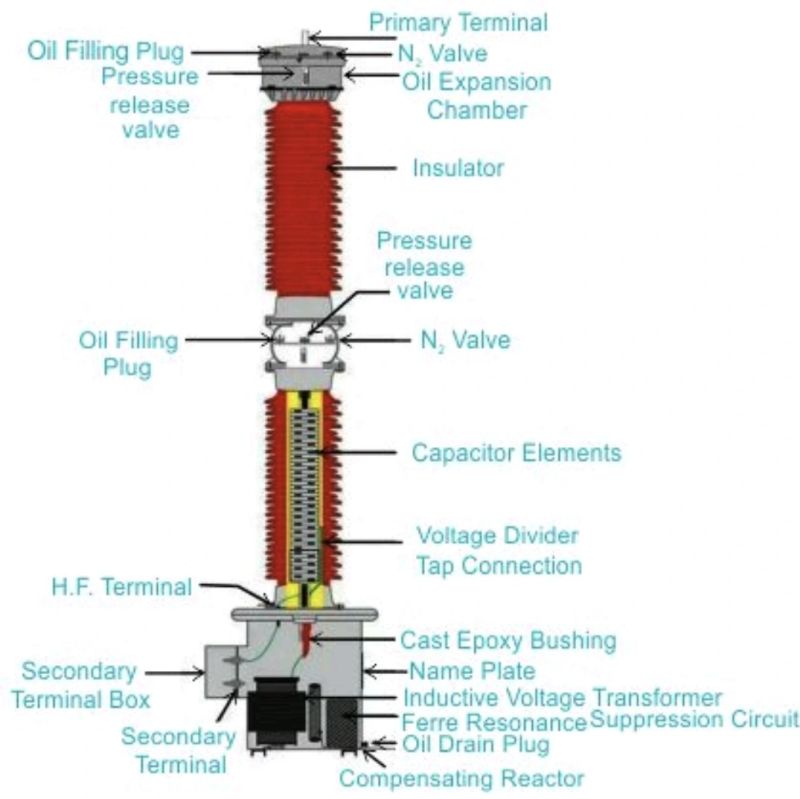A potential transformer (PT) is a device that reduces the voltage of a high voltage circuit to a safer, lower level for measurement. It’s also known as a voltage transformer.
Here are some characteristics of a potential transformer:-
Function:- A PT lowers the voltage to a level that’s safe for metering equipment. It’s used when the system or service voltage is higher than the rated voltage of a standard meter.
Construction:- A PT has a primary winding with more turns than the secondary winding. The primary winding is connected across the high voltage side, while the secondary winding is connected to voltmeters.
Types:- PTs can be dry type, oil-immersed type, or a combination of both, depending on the voltage.
Accuracy:-PTs have an accurate voltage ratio and phase relationship to ensure accurate metering.
Classes:- PTs are classified by accuracy class and protection class, with classes such as 0.1, 0.2, 0.5, and 1.0. These numbers represent the PT error ratio at the rated voltage.

Figure:- Parts of Potential Transformer
